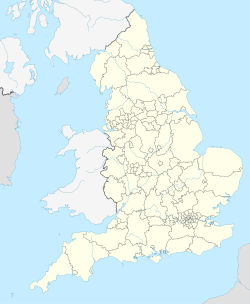 Disused mineworkings in 1978 | |
| Location | |
|---|---|
| Location | Tavistock, Devon, England |
| Coordinates | 50°32′18″N4°13′22″W / 50.5383°N 4.2227°W |
| Production | |
| Products | Copper Arsenic |
| History | |
| Opened | 1844 |
| Closed | 1903 |
Devon Great Consols was a copper mine near Tavistock in Devon, England. The lease on the site was taken from the Duke of Bedford in 1844 by a group of investors, Sanderson & Co., that included the father of William Morris. The 1,024 shares, sold at one pound each, were divided among the six men. Earlier attempts to mine this property had all ended in failure.
Contents
- History
- World's most productive copper mine
- Copper gives way to arsenic
- Post-closure
- Mineral statistics
- Notes
- References
- Sources
- External links
Work at the site began in August of the same year, when it was known as North Bedford Mines or Wheal Maria. By November 1844, a rich vein of copper ore was discovered at a depth of 20 fathoms (about 36 metres) under ground. After learning that the copper lode extended eastward for over two miles (over 3 km), the company quickly began opening other mines on its property.
In the first six years of operation, nearly 90,000 tons of copper ore had come from Devon Great Consols. The mine was so productive that transport by horse and wagon could no longer handle the volume of copper it sent to the docks at Morwellham Quay. The company built its own railway, the Devon Great Consols Railway, to get its product to market; it was also necessary for the firm to build a Great Dock[ clarification needed ] and Morwellham Quay because of the amount of copper it had to ship.
It was once viewed as the most productive copper mine in the world. When cheaper sources of copper became available from abroad, the company began refining arsenic in 1867 and was considered to be its largest producer in the 19th century.




